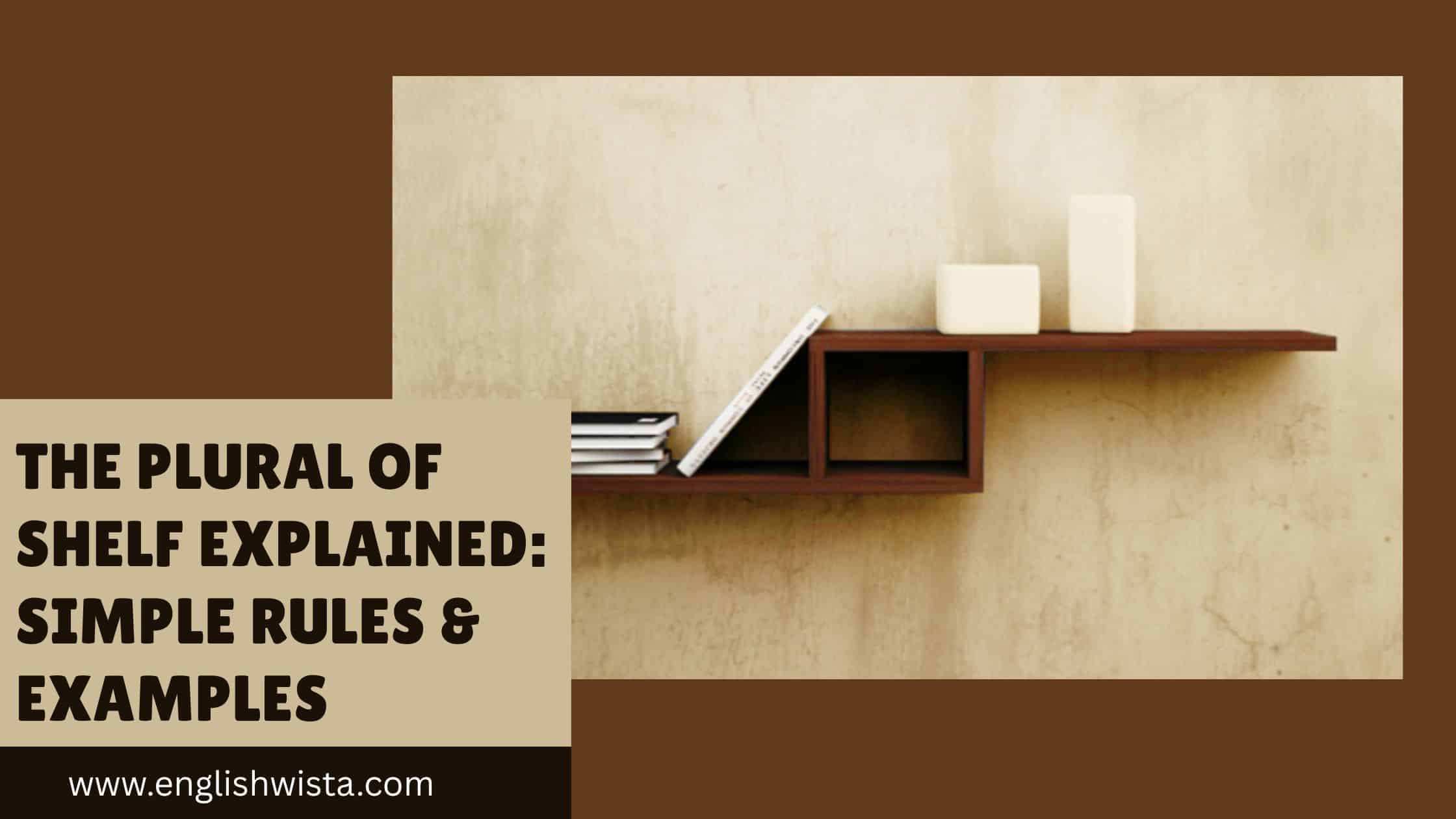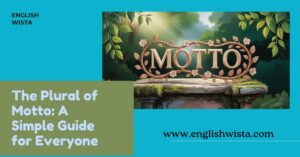Have you ever stood in front of a bookshelf and thought, “Wait… is it shelf or shelves?” Don’t worry you’re not alone! Many people get a little confused when it comes to the plural of the word shelf. It’s a small word, but it brings up some big questions about English spelling and pronunciation.
English can be a little tricky sometimes, especially when certain words don’t just add an “s” to become plural. The word shelf is one of those special words. In this article, we’ll explore the plural of shelf in a simple and friendly way. We’ll also look at why it changes the way it does, how to use it in sentences, and even some fun facts you can share with friends.
So, grab a comfy seat (maybe even near a shelf or two), and let’s dive in!
What Is a Shelf?
Before we get into plurals, let’s be clear about what a shelf actually is.
A shelf is a flat surface, usually made of wood, metal, or plastic, that is fixed to a wall or placed inside furniture. People use shelves to store or display things like books, dishes, decorations, or even groceries in a store.
Here are a few quick examples of the word shelf in a sentence:
- “I put the photo frame on the top shelf.”
- “The store had an empty shelf where the bread usually goes.”
- “He built a wooden shelf for his plants.”
So, in short, a shelf is something simple, useful, and very common in our daily lives.
What Is the Plural of Shelf?
Now for the big question: What is the plural of shelf?
The answer is: shelves.
Instead of just adding “s” to the end, the “f” changes to “v” and then we add “es.” That’s why shelf becomes shelves.
Here are examples in action:
- Singular: “There is one shelf in the room.”
- Plural: “There are three shelves in the room.”
This spelling change might feel unusual at first, but once you practice, it becomes natural.
Why Does Shelf Become Shelves?
You might be wondering: “Why doesn’t shelf just become shelfs?”
That’s a great question! English has some special spelling rules. For many words that end with “f” or “fe,” the plural changes the “f” into “v” and then adds “es.”
Here are some other words that follow this same pattern:
- Leaf → Leaves
- Knife → Knives
- Wife → Wives
- Life → Lives
And, of course:
- Shelf → Shelves
It doesn’t happen with every word that ends in “f.” For example, “roof” becomes “roofs” (not rooves). But with shelf, the correct plural is definitely shelves.
Is Shelf Singular or Plural?
Let’s make it extra clear:
- Shelf = singular (just one).
- Shelves = plural (two or more).
Example sentences:
- “This shelf is too small for all my books.”
- “These shelves are perfect for organizing my toys.”
It’s a simple distinction once you know it.
How Do You Pronounce Shelves?
Sometimes spelling changes affect the way we say a word, so let’s check the pronunciation.
- Shelf is pronounced with an “f” sound at the end.
- Shelves changes the sound to a “v” before adding the “z” sound of “es.”
So:
- Shelf = /ʃɛlf/ (like “self”).
- Shelves = /ʃɛlvz/ (sounds like “shelvz”).
Practice saying them out loud:
- “I bought one shelf.”
- “I bought two shelves.”
Real-Life Examples with Shelf and Shelves
To help the words feel natural, here are some everyday examples you might use:
Singular examples (shelf):
- “The cat jumped onto the shelf.”
- “She decorated the shelf with candles.”
- “There’s dust on the shelf above the bed.”
Plural examples (shelves):
- “All the kitchen shelves are filled with jars.”
- “The library has rows and rows of shelves.”
- “He cleaned the shelves before putting the books back.”
Notice how the meaning changes depending on whether you’re talking about one or many.
Common Mistakes People Make
When learning English, it’s easy to make mistakes with words like shelf. Let’s go over some common ones so you can avoid them.
- Using “shelfs” instead of “shelves”
- Wrong: “I bought three shelfs.”
- Correct: “I bought three shelves.”
- Mixing up shelf and shelves
- Wrong: “The shelves is empty.”
- Correct: “The shelves are empty.”
- Forgetting the pronunciation change
- Saying “shelf-es” instead of “shelves.”
- Remember: the “f” turns into “v.”
By keeping these in mind, you’ll sound more natural when you use the word.
The Origin of the Word Shelf
Here’s a fun fact! The word shelf has been around for a very long time. It comes from Old English, where it was spelled scylfe. Back then, it meant a flat board or ledge. Over time, the spelling changed, but the meaning stayed very similar.
The word shelves as a plural form has also been in use for centuries. So when you say “shelves,” you’re actually using a form of English that connects back hundreds of years. Pretty cool, right?
Comparing Shelf with Similar Words
Sometimes, comparing one word to another makes learning easier. Let’s look at a few examples.
- Shelf and Self: Both end with “f,” but they change differently in plural.
- Shelf → Shelves
- Self → Selves
- Shelf and Roof: Both end with “f,” but only one changes to “v.”
- Shelf → Shelves
- Roof → Roofs
- Shelf and Elf: Both follow the same pattern.
- Shelf → Shelves
- Elf → Elves
So, when in doubt, check a dictionary but these comparisons show you that shelf is part of a special group.
Shelves in Everyday Life
It’s not just about grammar shelves are everywhere around us! Think about it:
- In your home, shelves hold books, food, clothes, or decorations.
- In stores, shelves display products for customers.
- In libraries, shelves organize thousands of books.
- Even in nature, we use the word “shelf” in phrases like “continental shelf” (part of the ocean floor).
So, learning the plural shelves is useful because you’ll see and hear it often in daily life.
Fun Expressions with Shelf
Did you know that shelf also shows up in idioms and phrases? Here are a few fun ones:
- “On the shelf” – This can mean something is not being used or considered. For example:
“That project has been put on the shelf until next year.” - “Shelf life” – This refers to how long something, like food, can last before going bad. Example:
“The shelf life of milk is usually a week or two.” - “Top shelf” – This is often used to describe something of high quality. Example:
“That restaurant serves top-shelf cocktails.”
Knowing these phrases can make your English sound more colorful and natural.
Quick Review: Key Takeaways
Let’s summarize the main points so you don’t forget:
- Shelf is singular.
- Shelves is plural.
- The “f” changes to “v” before adding “es.”
- Example: “One shelf, two shelves.”
- Common mistake: Don’t say “shelfs.”
- Fun fact: The word comes from Old English.
- Shelves are everywhere in daily life, so this word is very useful!
Conclusion: From One Shelf to Many Shelves
And there you have it! The plural of shelf is shelves. It’s one of those English words that doesn’t just follow the simple “add an s” rule. Instead, it changes a little in spelling and sound.
But now that you know the rule, it’s actually pretty easy. Just remember: shelf → shelves. Use it in sentences, practice it in conversation, and soon it will feel completely natural.
Next time you’re at home, in a store, or in a library, take a look around at all the shelves. You’ll not only notice how useful they are but also feel confident knowing exactly how to use the word in English.
So, whether you’re talking about one shelf or many shelves, you’ll always know the right form. And that’s a skill worth putting on the top shelf of your language learning journey!



